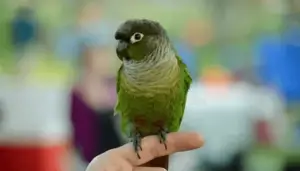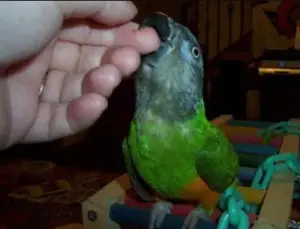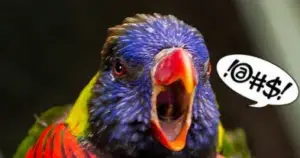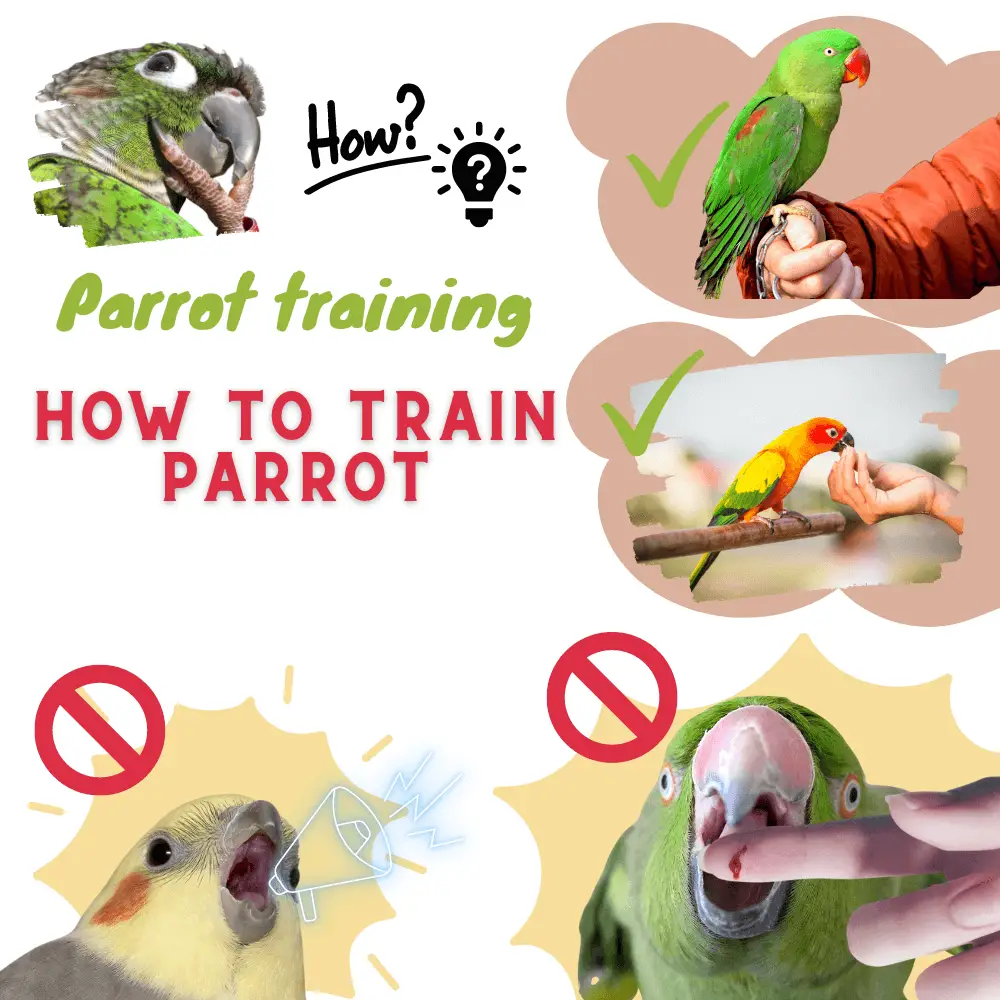Parrot training: an EAM bird requires education and monitoring in order to maintain taming because hand-rearing is essentially limited to feeding and getting used to the hand of the keeper, which is not sufficient to have a tame pet parrot.
The follow-up consists of continuing the manipulation by hand from the first treatment, caressing it, talking to it… and this as often as possible while still respecting its rest times! this is valid for the MAN parrot.
In addition, rules of life must be put in place so that the bird learns good manners, this education will make your life easier.
How to training parrot
Important educational rules to teach your parrot:
- Parrot training To move up and down with your hand
 It is a question of saying the word “up” for example when taking the parrot. As soon as the bird gets on the hand it is rewarded. The parrot will quickly learn that when he hears the word “up” combined with the presence of a hand in front of him, he must climb on the hand to have his reward. Over time, it will no longer be necessary to give treats. The same is true for the “down” command.
It is a question of saying the word “up” for example when taking the parrot. As soon as the bird gets on the hand it is rewarded. The parrot will quickly learn that when he hears the word “up” combined with the presence of a hand in front of him, he must climb on the hand to have his reward. Over time, it will no longer be necessary to give treats. The same is true for the “down” command.
- Teaching your bird to recall

Once the “up” and “down” commands are acquired by your parrot, the recall exercise can begin. It is exactly the same as the previous step, except that it must be adapted to the reminder by modifying the name of the command (eg: come…) and the reward after the execution of the command. For more details.
- Parrot training to Go to his cage on request
It is necessary to take advantage that the bird is still young and easily manipulated to teach it to enter its cage.
Leave it out of its cage on its own, normally it will return alone to its cage to eat or drink, that’s when you put it back together with its favorite treat by saying the word you want to associate with this “cage” order.
for example. If the parrot refuses to enter, do it yourself without rushing it, ask the parrot to climb on your hand and bring it into its cage, then give it its reward. Leave the door open for him to come out and repeat the previous step.
- How to train parrot not to bite
 Young parrots tend to nibble to taste and test the resistance of objects.
Young parrots tend to nibble to taste and test the resistance of objects.
Your skin will not be spared but this is corrected by making your parrot understand that your skin is not to bite, for this you must say a firm “No” to your bird and leave it in the room alone for 30 seconds then return.
to see him. Repeat the action until the bird stops biting. You can also gently pinch its beak by saying “No”. Avoid locking him in his cage to punish him. Its cage should be a pleasant place for your parrot.
- How do you get a parrot to shut up
 The parrot wants to know where you are. That’s why he’s screaming. This is usually a contact cry. He wants to make sure you’re not too far away.
The parrot wants to know where you are. That’s why he’s screaming. This is usually a contact cry. He wants to make sure you’re not too far away.
- Ignore unpleasant behavior.
- You should never come back to see the parrot when it cries, the parrot will have had what it wanted. Even if the person comes back to inflict a punishment on the parrot(which is really not advisable) the bird will have understood that when it cries, it has attention.
- Reinforce good behavior.
- Reward the bird for not screaming.

